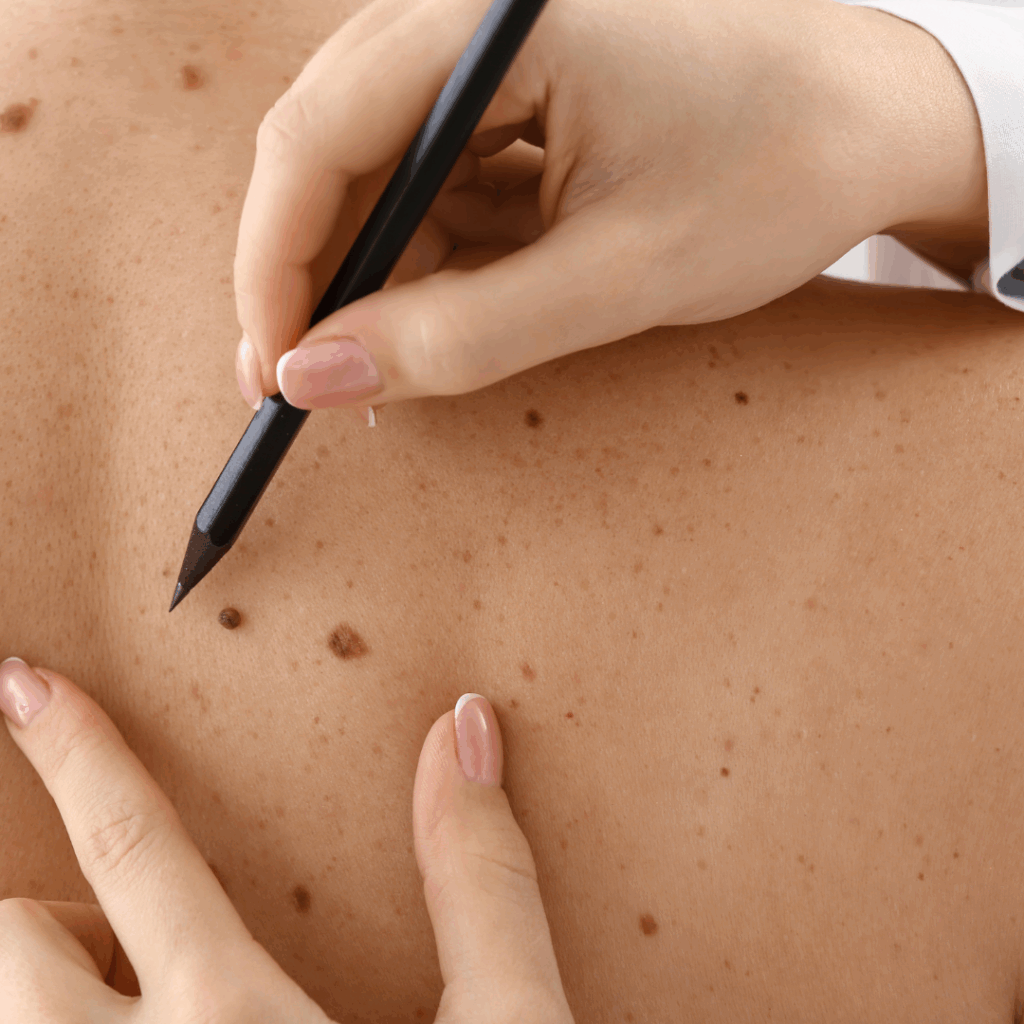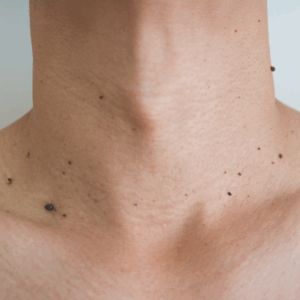
Why Healthy Skin Month Is the Perfect Time to Refresh Your Routine
Healthy Skin Month is here! Discover how to protect your skin this winter and book your skincare consultation today!
Shannon Del Grande is now seeing patients in our Wayne/Chesterbrook office.
Skin cancer is the most commonly diagnosed cancer in the United States, affecting millions each year. While many types are highly treatable when caught early, others pose a more serious risk. Melanoma, for example, makes up only about 1% of all skin cancer cases but is responsible for the majority of skin cancer-related deaths. Its aggressive nature and potential to spread rapidly requires an early diagnosis.
In this article, we’ll compare melanoma to other skin cancers, highlight warning signs, risk factors, and offer guidance on prevention and early detection.
While this article spells out some important information about rosacea, we highly recommend you read the full article, here are the key points we will focus on:

Skin cancer refers to the uncontrolled growth of abnormal skin cells, often triggered by cumulative damage from ultraviolet (UV) radiation. It can develop in different layers of the skin and appear in various forms. Some types may stay localized, while others, like melanoma, can spread to other body parts. Identifying the type of skin cancer is key to determining the appropriate course of treatment and improving outcomes.
The unique origin, behavior, and appearance of melanoma make it distinct from more common types of skin cancer, like basal cell or squamous cell carcinoma.
Melanoma is less common but significantly more life-threatening than other skin cancers. The lifetime risk of developing melanoma varies by skin tone, about 1 in 33 for white individuals, 1 in 200 for Hispanic individuals, and 1 in 1,000 for Black individuals. These numbers reflect how lighter skin tones are more susceptible, but anyone can be at risk.
However, incidence rates of melanoma have continued to rise over the past few decades.
The most effective way to recognize potential melanoma is by following the ABCDE rule:
Regularly checking your skin and knowing what’s normal for you can help detect melanoma before it becomes more serious.
Certain individuals face a significantly higher risk due to genetics, lifestyle, or environmental exposure. Recognizing these risk factors can help you take proactive steps toward prevention:
The treatment approach for skin cancer depends on the type, location, size, and stage. The following are some of the ways skin cancers are treated:
Not all skin cancers are preventable. However, there are proven steps you can take to reduce your risk significantly.
At Bryn Mawr Dermatology, we are committed to helping you stay proactive about your skin health. Whether you’re due for a routine skin check or concerned about a changing mole, our board-certified dermatologists provide thorough evaluations and customized care plans based on your unique risk factors and skin type.
With convenient locations in Villanova, Collegeville, and Chesterbrook, PA, our team uses advanced diagnostic tools and evidence-based treatments to detect and manage skin cancers in their earliest stages. We take the time to educate our patients and ensure they feel comfortable and informed every step of the way.
Don’t wait for symptoms to appear. Schedule your annual skin exam or call us at (484) 202-0438 to take a proactive step toward protecting your skin. Early detection saves lives!

Healthy Skin Month is here! Discover how to protect your skin this winter and book your skincare consultation today!

Celebrate Skincare Awareness Month by making your skin health a top priority. Discover expert tips and book your appointment today!

Do you want to fade acne scars, smooth wrinkles, or remove unwanted hair? Learn how laser skin treatments can help!

Give your skin a much-needed reset this back-to-school season. Book your full-body skin check with Bryn Mawr Dermatology today.

Ready for a skin reset? Refresh your glow after summer with expert care and treatments at Bryn Mawr Dermatology. Book your appointment today.

Is that bump a wart or a skin tag? Learn how to spot the difference, and when it’s time for treatment your next treatment.

By: Bryn Mawr Dermatology, Published: March 4 2024
Medically Reviewed By: Christine Stanko, MD, FAAD –March 3, 2025
For COSMETIC APPOINTMENTS:
For MEDICAL APPOINTMENTS: